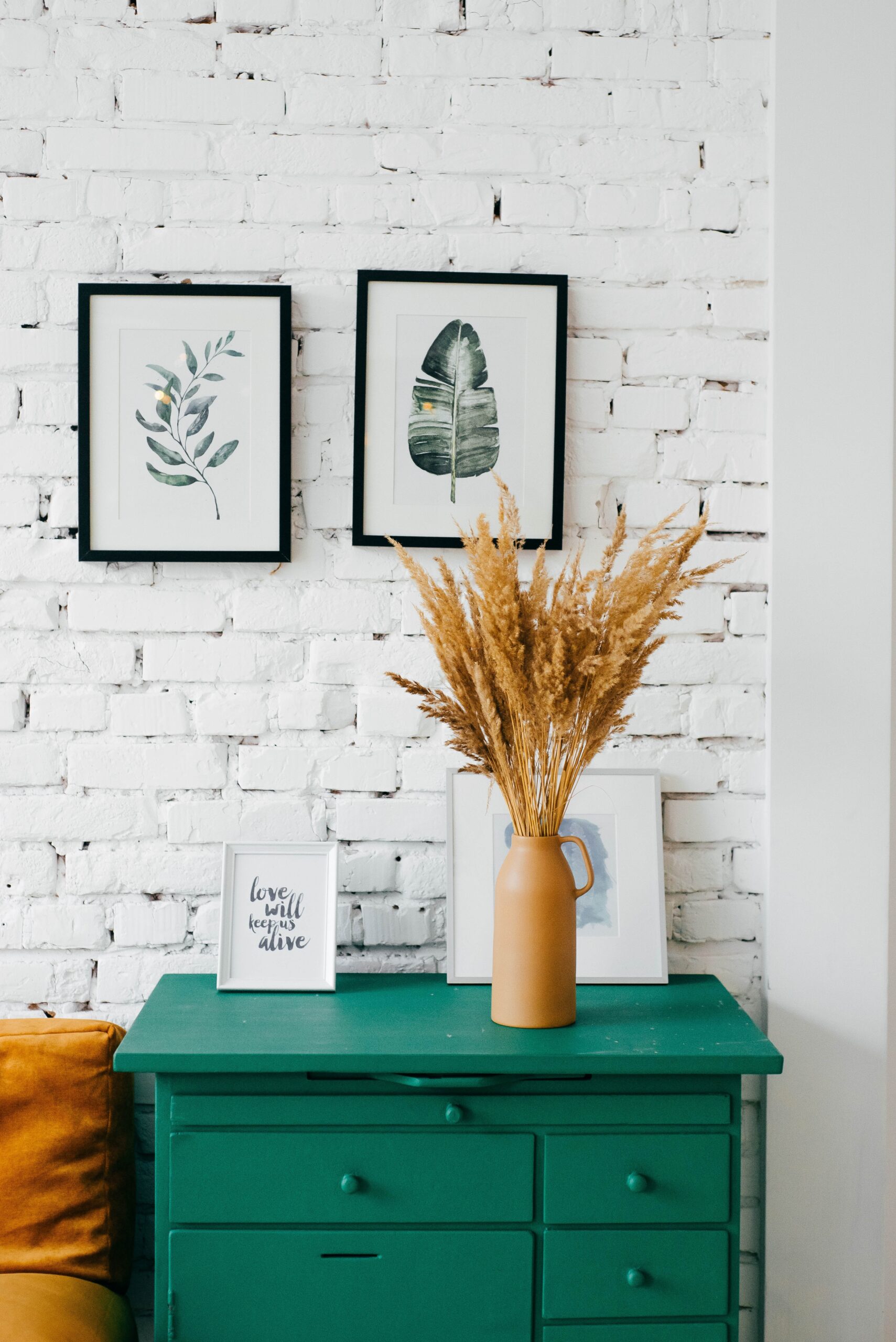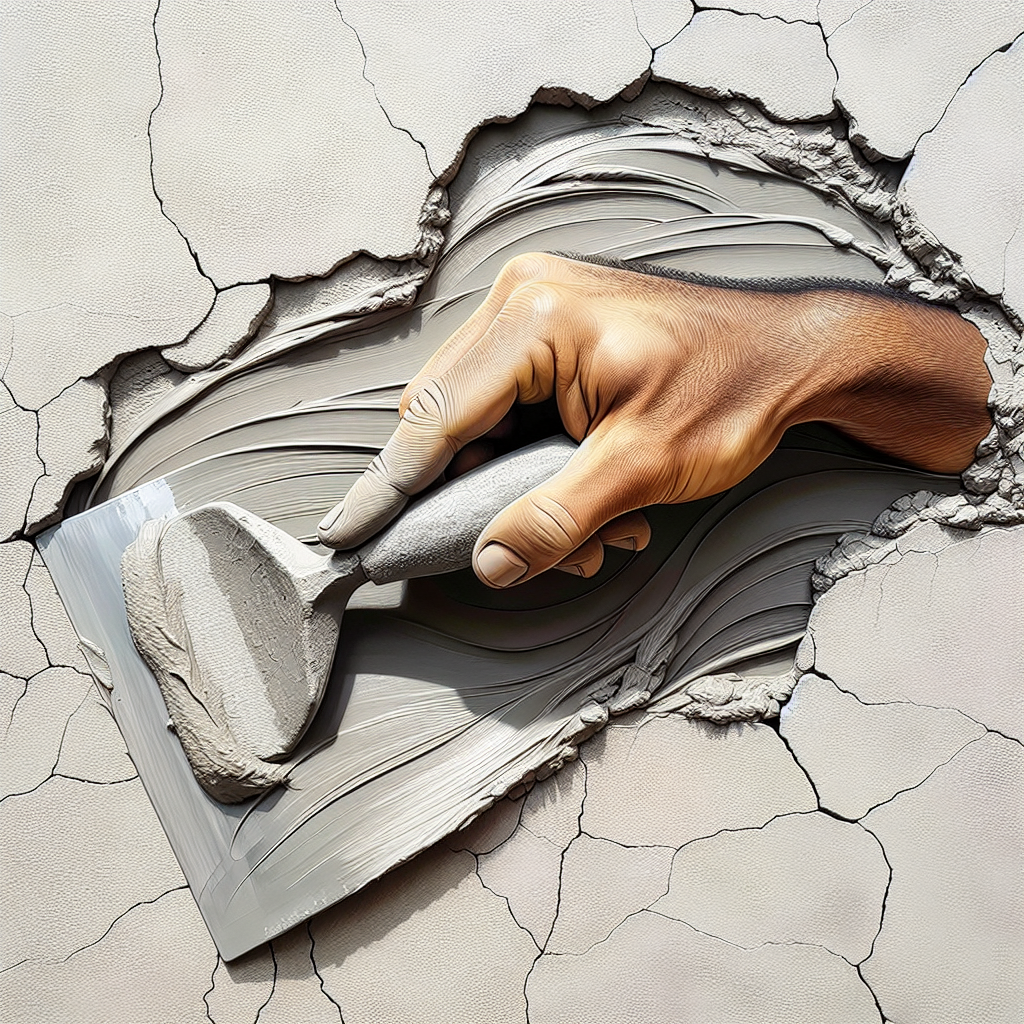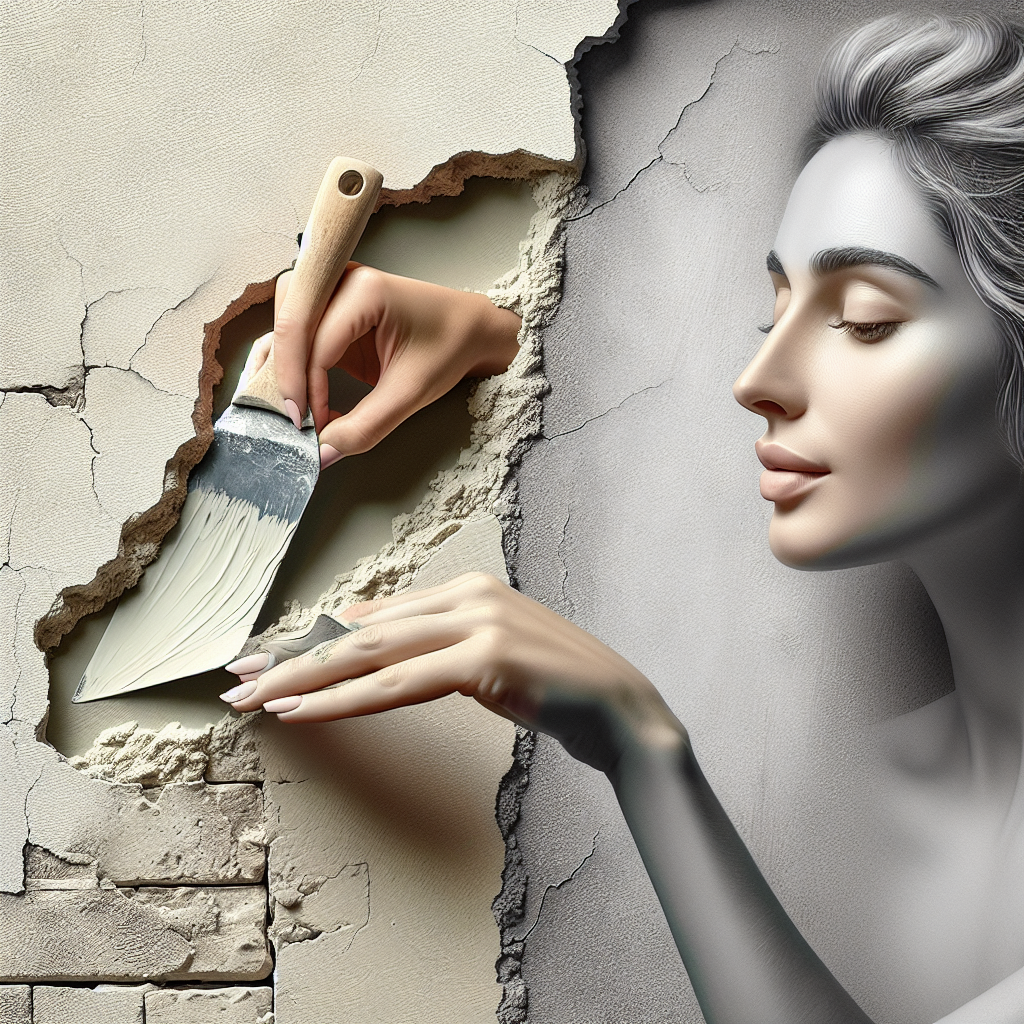
If you find yourself with a cracked plaster wall, don’t panic – it’s a common issue that can be easily fixed with a little bit of know-how. Whether the crack is big or small, repairing it doesn’t have to be overwhelming. In this article, we will guide you through the process of repairing a cracked plaster wall step by step, giving you the confidence to tackle the task yourself and restore the beauty of your wall in no time.
Preparing the Wall
Gathering the necessary tools
Before embarking on the task of repairing a cracked plaster wall, it’s important to gather all the necessary tools. Some essential items you’ll need include a putty knife, sandpaper, joint compound, adhesive sealer, plaster washers, fiberglass mesh tape, a drywall patch, and primer. Having these tools readily available will make the repair process much smoother.
Removing loose plaster
The first step in preparing the wall is to remove any loose plaster around the cracked area. Use a putty knife to gently chip away the damaged plaster until you reach a solid surface. Be careful not to apply excessive force, as this could cause further damage to the wall.
Cleaning the wall surface
Once the loose plaster has been removed, it’s important to clean the wall surface thoroughly. Use a brush or a vacuum cleaner to remove any dust, debris, or loose particles. This will ensure that the repair materials adhere properly to the wall and result in a smooth finished surface.
Applying adhesive sealer
Applying an adhesive sealer to the wall before making any repairs is a crucial step in preventing future cracks. The sealer helps to strengthen the wall and provides a solid base for the repair materials. Follow the manufacturer’s instructions to apply the adhesive sealer evenly across the entire wall surface.
Repairing Small Cracks
Evaluating the crack size
Before repairing small cracks, it’s important to evaluate their size and determine the appropriate method of repair. Small cracks, typically less than 1/8 inch wide, can generally be repaired using joint compound.
Using joint compound
To repair small cracks, you’ll need to apply joint compound. Using a putty knife, apply a thin layer of joint compound directly over the crack. Make sure to spread it evenly and feather it out to blend with the surrounding wall surface.
Applying the first coat
After applying the joint compound, allow it to dry completely. Once dry, inspect the repaired area and apply a second coat if needed. Use the putty knife to smooth out any rough edges or uneven areas. Allow the first coat to dry thoroughly before proceeding to the next step.
Sanding the patched area
Once the joint compound is completely dry, sand the patched area gently with fine-grit sandpaper. This will help create a smooth surface and ensure the repaired area blends seamlessly with the rest of the wall. Be careful not to apply too much pressure, as this could damage the freshly repaired area.
Applying additional coats if needed
After sanding, inspect the patched area again. If any imperfections are still visible, apply additional coats of joint compound as needed. Repeat the drying and sanding process until the repaired area is smooth and indistinguishable from the rest of the wall.

Repairing Large Cracks
Evaluating the crack severity
Large cracks, typically wider than 1/8 inch, require a slightly different approach to repair. Before beginning the repair process, carefully evaluate the severity of the crack to determine the most effective solution.
Creating a V-shaped groove
To repair large cracks, it’s often necessary to create a V-shaped groove along the length of the crack. Use a utility knife or a grout saw to carefully carve out the groove. This will provide a larger surface area for the repair materials to adhere to and help prevent the crack from reappearing in the future.
Filling the groove with plaster
Once the groove has been created, fill it with plaster using a putty knife. Press the plaster firmly into the groove, ensuring that it completely fills the space. Smooth out the surface of the plaster with the putty knife, making it level with the surrounding wall.
Smoothing the surface
After the plaster has been applied, use a damp cloth or sponge to smooth out the surface. This will help blend the repaired area with the rest of the wall and create a seamless finish. Be sure to work gently to avoid removing too much plaster.
Applying joint compound
Once the plaster has dried, apply a thin layer of joint compound over the repaired area. Use a putty knife to feather the compound out, ensuring it blends smoothly with the surrounding wall. Allow the joint compound to dry completely before proceeding to the next steps.
Repairing Deep Cracks
Determining the cause of the crack
Deep cracks in plaster walls may be indicative of an underlying issue. Before repairing the crack, it’s important to determine the cause. Common causes include structural movement, settling of the building, or moisture-related issues. If the cause of the crack is not addressed, it may reappear in the future.
Filling the crack with adhesive
To repair deep cracks, start by filling them with a high-quality adhesive or filler specifically designed for repairing plaster walls. Use a putty knife to press the adhesive into the crack, ensuring it reaches all the way to the back. Smooth out the surface of the adhesive, making it level with the surrounding wall.
Using mesh tape for reinforcement
To reinforce the repair and prevent the crack from reoccurring, apply fiberglass mesh tape over the filled crack. Press the tape firmly into the adhesive, making sure it spans the entire length of the crack. This will provide additional strength and stability to the repaired area.
Applying several coats of joint compound
Once the mesh tape is in place, apply several coats of joint compound over the repaired area. Use a putty knife to feather the compound out, blending it with the surrounding wall. Allow each coat to dry before applying the next one. Sand the patched area between coats to create a smooth finish.
Finishing and sanding the area
After applying the final coat of joint compound, allow it to dry completely. Once dry, gently sand the patched area with fine-grit sandpaper to ensure a smooth and seamless finish. Be careful not to oversand and remove too much compound. Wipe away any dust with a clean cloth before proceeding to the finishing steps.

Repairing Cracked Corners
Examining the corner crack
Corner cracks are a common issue in plaster walls and require a specific approach to repair. Before beginning the repair process, carefully examine the crack to determine its severity and the best course of action.
Applying adhesive sealer
To repair a cracked corner, start by applying adhesive sealer along the entire length of the crack. The adhesive sealer will strengthen the corner and provide a solid base for the repair materials. Make sure to follow the manufacturer’s instructions for application.
Using patching plaster or joint compound
Once the adhesive sealer has dried, use patching plaster or joint compound to fill the crack. Apply the material with a putty knife, making sure to completely fill the crack and create a smooth surface. Feather the edges of the patch to blend with the surrounding wall.
Feathering the edges
To ensure a seamless repair, feather the edges of the patch by gradually decreasing the pressure applied with the putty knife. This will help the repaired area blend smoothly with the rest of the wall. Take your time and work carefully to achieve a professional-looking finish.
Sanding and priming
After the patch has dried, gently sand the repaired area to create a smooth surface. Wipe away any dust with a clean cloth. Once the area is clean and smooth, apply a coat of primer to prepare the wall for painting. Primer helps the paint adhere better and ensures a consistent finish.
Dealing with Holes
Inspecting the hole size
Holes in plaster walls can occur due to various reasons, such as accidental damage or the removal of fixtures. Before proceeding with the repair, inspect the hole to determine its size and the necessary steps to fix it.
Using a drywall patch
For smaller holes, a drywall patch is an effective solution. Cut the patch to fit the size of the hole, making sure it extends slightly beyond the damaged area. The patch provides a stable base for the joint compound and helps create a seamless repair.
Attaching the patch to the wall
Apply a layer of joint compound around the edges of the hole. Place the drywall patch over the hole, pressing it firmly into the compound. Smooth out any air bubbles or excess compound, ensuring the patch is securely attached to the wall.
Applying joint compound over the patch
Once the patch is in place, apply several coats of joint compound over it. Use a putty knife to feather the compound out, blending it with the surrounding wall. Allow each coat to dry before applying the next one. Sand the patched area between coats to create a smooth finish.
Sanding and painting the wall
After applying the final coat of joint compound, allow it to dry completely. Once dry, gently sand the patched area with fine-grit sandpaper to ensure a smooth and seamless finish. Wipe away any dust with a clean cloth. Finally, apply paint to match the color of the surrounding wall, making sure to blend the repaired area with the rest of the wall.

Reinforcing Plaster Walls
Identifying weak areas
Over time, plaster walls can develop weak areas that may require reinforcement. Before proceeding with reinforcement, carefully inspect the walls and identify any sections that show signs of deterioration or cracking.
Installing plaster washers
Plaster washers are an effective method to reinforce weak areas in plaster walls. These washers consist of a metal disk with holes and help redistribute the weight of the plaster, preventing further cracking. To install plaster washers, place them over the weak areas and screw them into the wall.
Tightening loose plaster
If the plaster has become loose from the wall, use a putty knife to carefully lift the loose sections. Apply adhesive to the back of the plaster and press it back onto the wall. Use plaster washers or nails to secure the loose sections in place. Allow the adhesive to dry completely before continuing with the repair process.
Applying adhesive sealer
Once the loose plaster has been secured, apply adhesive sealer across the entire wall. This will help strengthen the plaster and provide a solid base for any additional repair materials. Follow the manufacturer’s instructions on how to apply the adhesive sealer.
Reinforcing with fiberglass mesh tape
To further reinforce weak areas, apply fiberglass mesh tape over the walls. Press the tape firmly onto the adhesive sealer and smooth out any air bubbles or wrinkles. The fiberglass mesh tape adds an extra layer of strength to the plaster walls, preventing future cracks and damage.
Finishing Techniques
Sanding the repaired area
After completing the necessary repairs, it’s essential to sand the repaired areas to achieve a smooth and seamless finish. Use fine-grit sandpaper and gently sand the patches, feathering the edges to blend them with the surrounding wall. Wipe away any dust with a clean cloth.
Applying primer on the patched wall
To ensure a consistent finish, apply a coat of primer to the repaired areas. Primer helps the paint adhere better and provides a uniform base for the final paint color. Follow the manufacturer’s instructions for proper application and drying times.
Matching the texture
To achieve a seamless look, match the texture of the repaired areas with the rest of the wall. Use a texture spray or a sponge to recreate the texture. Practice on a small area before attempting to match the texture of the entire wall.
Painting the repaired wall
Once the repaired areas have been primed and the texture matched, it’s time to paint the wall. Choose a paint color that matches the existing wall color and apply it evenly to ensure a professional finish. Use a roller or a brush, and apply multiple coats if necessary, allowing each coat to dry before applying the next.
Applying a protective topcoat
To further protect the repaired wall and ensure its longevity, consider applying a protective topcoat. This can be a clear coat or a sealer, depending on your preference. The topcoat will add an extra layer of durability, making the wall more resistant to future damage.

Preventing Future Cracks
Controlling humidity levels
One of the main causes of plaster wall cracks is excessive moisture. To prevent future cracks, it’s important to control humidity levels in your home. Use dehumidifiers or ventilation systems to maintain a consistent humidity level and minimize moisture-related issues.
Maintaining even temperature
Fluctuations in temperature can also lead to plaster wall cracks. To prevent this, maintain an even temperature throughout your home. Avoid sudden changes in temperature and drafts that could cause the walls to expand and contract, resulting in cracks.
Avoiding heavy objects near the wall
Plaster walls are susceptible to damage from heavy objects leaning against them or hanging on them. To prevent cracks, avoid placing heavy furniture or equipment directly against the walls. Be cautious when moving or rearranging furniture near the walls to prevent accidental damage.
Using expansion joints
In areas where structural movement is common, such as between different building materials, use expansion joints. Expansion joints allow the materials to move independently without causing stress or cracks in the plaster walls. Consult a professional to determine the appropriate locations for expansion joints in your home.
Regular inspections and repairs
To catch potential issues before they escalate, regularly inspect your plaster walls for any signs of damage or cracks. Addressing small cracks or weak areas promptly can prevent larger and more costly repairs in the future. Make it a part of your routine to inspect, repair, and maintain the health of your plaster walls.
When to Seek Professional Help
Assessing the complexity of the repair
While many plaster wall repairs can be done as a DIY project, some repairs may require professional expertise. Assess the complexity of the repair before deciding to tackle it on your own. If you’re unsure of the process or lack the necessary skills, it’s best to seek the help of a professional.
Considering time and experience
Repairing a cracked plaster wall can be time-consuming, especially if you’re not familiar with the process. Consider whether you have the necessary time and experience to complete the repair. If time is limited or if you’re unsure about your abilities, it’s advisable to hire a professional who can efficiently handle the task.
Determining the extent of damage
The extent of damage to your plaster wall is a crucial factor in determining whether to seek professional help. If the cracks are extensive, the structure is compromised, or you’re unsure about underlying issues, it’s best to consult a professional. They have the expertise to assess the situation and provide appropriate solutions.
Seeking advice from a professional
Even if you’re confident in your DIY skills, it’s always beneficial to seek advice from a professional. They can provide guidance on the best repair methods, recommend suitable materials, and offer insights into potential underlying issues. Consulting with a professional ensures that you’re on the right track and minimizes the risk of further damage.
Deciding on DIY or professional repair
After considering all factors, such as complexity, time, extent of damage, and professional advice, make an informed decision on whether to proceed with a DIY repair or hire a professional. Remember that the safety and integrity of your plaster walls are paramount, so it’s important to choose the option that gives you the best and most reliable results.
